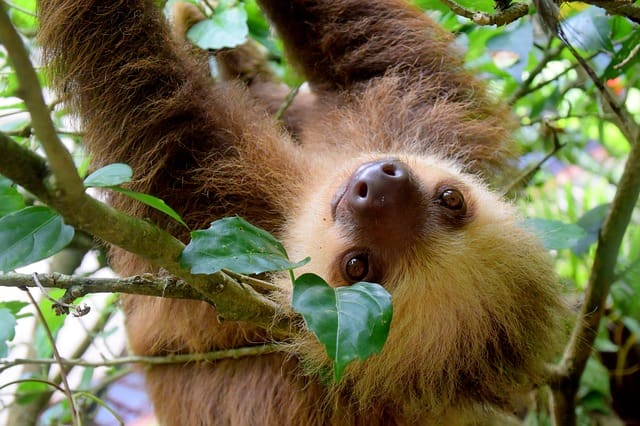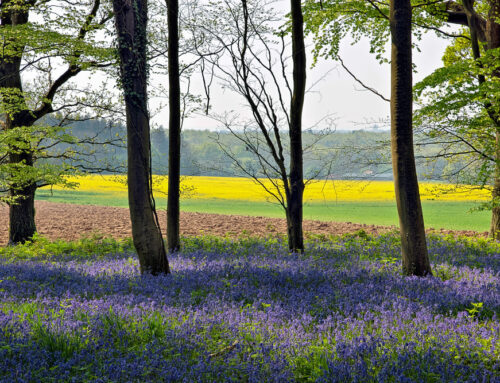Where To See Sloths on Your Costa Rica Vacation

Where to See Sloths in Costa Rica

Sloths are some of the most unique and intriguing mammals on earth. Their narcoleptic lifestyle, glacial movements and inscrutable yet strangely expressive faces make them a unique sighting in the animal kingdom. The beautiful South American country of Costa Rica with it’s lush, verdant rainforests is one of the best locations in the world to get the chance to see these intriguing animals up close and personal. The sloth has become something of an unofficial mascot of the country, and fortunately the local infrastructure is geared towards helping visitors see sloths first hand.
What Makes Sloths so Special?
You don’t need to be a biologist to realize that sloths are very different from the rest of the fauna you’re likely to encounter in a rainforest habitat. Sloths are from the same family of animals as anteaters and aardvarks, but have many distinguishing features that set them apart from those (and, in fact, every other) animal. The most distinguishing features of sloths is that they have one of the slowest digestive systems of any mammal: on average it can take a sloth up to two weeks to digest a single meal. Since the pace of their digestion means they receive energy at a very slow rate from their food, sloths have very slow metabolisms that cause them to sleep for 20 hours a day. You would think this would make sloths very vulnerable to predators, but they’ve actually evolved to have a remarkable series of defenses to protect them from potential predators in the jungle.
Slow and Steady Wins the Race
Sloths survive of a diet of leaves and plants, occasionally eating any insects that can’t outrun them. Sloths spend their days sleeping in the trees, only venturing onto the ground to urinate and defecate roughly once every seven days. This is one of the riskiest times in a sloth’s life, as they leave themselves vulnerable to attack by the handful of natural predators they face in the wild like wild cats and harpy eagles. To avoid these, sloths have a very developed camouflage system, aided in no small part by their amazing coats. The fur of a sloth is dense and matted from incubating its very own ecosystem that contains fungi, algae, mites, moths and more. These organisms maintain a symbiotic relationship with the sloth, as they help provide it with a deep, textured coat that blends in remarkably well with the rainforest environs in exchange for living in its fur rent-free.
Which Sloths can You See in Costa Rica?
There are six species of sloths on Earth, all of which reside in South America, and you can see two of them in Costa Rica. Whilst these particular varieties of sloth aren’t endangered, there are other sloths else where like the Pygmy and Brazilian sloths are very much under threat of extinction. Fortunately, in Costa Rica at least, these two species of sloth are in very rude health.
Two-Toed Sloth
Hoffman’s two-toed sloth (Choloepus Hoffmani) is a nocturnal dwelling creature, making him a lot harder for intrepid sloth-watchers to catch sight of. However, it’s not impossible to catch sight of one during a nightime hike through the jungle. You’ll know them by their coat which comes in varying shades of brown, and by the two claws on their front paws (bear in mind that all sloths have three claws on their hind paws, however). They can live in forests with elevations of up to 3000 meters from sea level.
Three-Toed Sloths

Also known as the brown-throated sloth (Bradypus Variegatus), the three-toed sloth is the most common variety on the planet. They’re slightly smaller than Hoffman’s sloth, and are more active, giving you a better chance to catch sight of them during the day. Their coats appear green from the algae incubated in their fur. While they’re more common and easily found than other varieties of sloth, they tend to be found in less elevated forests.
The Best Spots for Seeing Sloths
The most sure-fire option for catching a sloth sighting lies in one of Costa Rica’s many national parks. Tortuguero is a hotbed of rainforest wildlife, crammed with canals where you can take boat tours to get an aquatic perspective on all the incredible plants and animals inhabiting the area. You might even have the good fortune to see a sloth moving through the water (they’re surprisingly gifted swimmers). Arenal is another national park that’s a hotspot for wildlife expeditions. Located in the La Fortuna region and encompassing a dormant volcano, this is an excellent location for a guided hike through nature where you’ll have a great chance at spotting monkeys, colorful birds and, of course, sloths. The Osa Penisula is another stunning area of biodiversity that will provide ample opportunities for catching sight of a sloth snoozing in the tree branches.
Tips for Catching Sight of Sloths

Once you’re in the right spot to see sloths, the creatures’ naturally low-key manner can still make them hard to detect. Follow these tips to improve your chances of snatching a glimpes:
- Hire a guide: gaining the services of a local nature guide will exponentially improve your chances of seeing a sloth. Not only will these guides be familiar with the best places for sloth-watching, they will also be able to more easily detect and point out sloths, even through their not-inconsiderable natural camouflage.
- Look up: whilst it’s possible you might be lucky enough to see a sloth during one of their rare trips to the forest floor, they spend the vast majority of their time in the tree canopies. Keep your eyes to the skies to improve your chances of catching sight of one of them.
- Bring binoculars: A good pair of binoculars (or a decent zoom lens on a camera) can make all the difference when you’re trying to pick out sloths from the rest of the forest. A guide will often bring their own, but it pays off to keep your own set handy just in case.
- Do not disturb: if you’re lucky enough to see a sloth, whatever you do, don’t disturb it. Trying to pet or interfere with a sloth will do nothing but agitate it. Not to mention, their coats are so full of bacteria that you will be putting yourself into contact with an exciting variety of nasty disease vectors. Sloth like to mind their own business, so respect their wishes, take some pictures and let them relax in peace.
Whether you’ve specifically come in search of sloths or not, Costa Rica is a stunning travelling destination that has natural beauty in abundance. If you do find yourself there, though, you owe it to yourself to pursue a glimpse of these singular creatures. Follow these tips, and there’s a good chance you’ll catch sight of a sloth in all their majestic inactivity.




